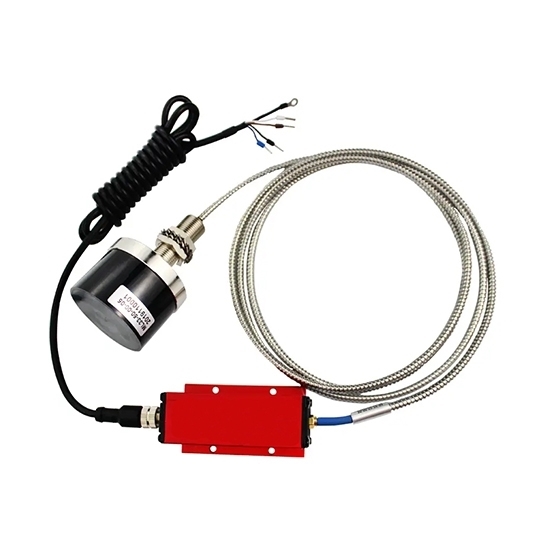
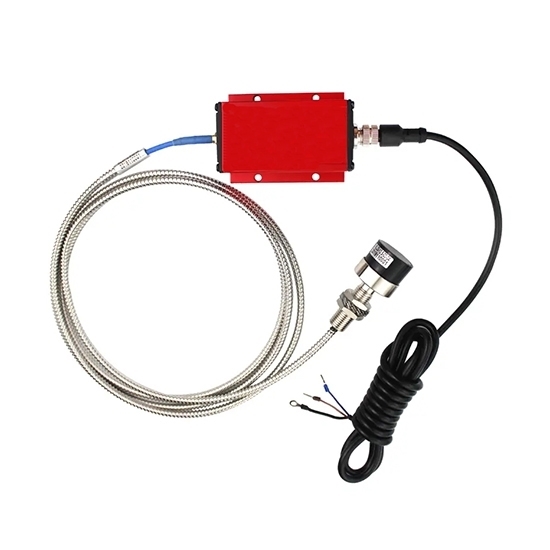
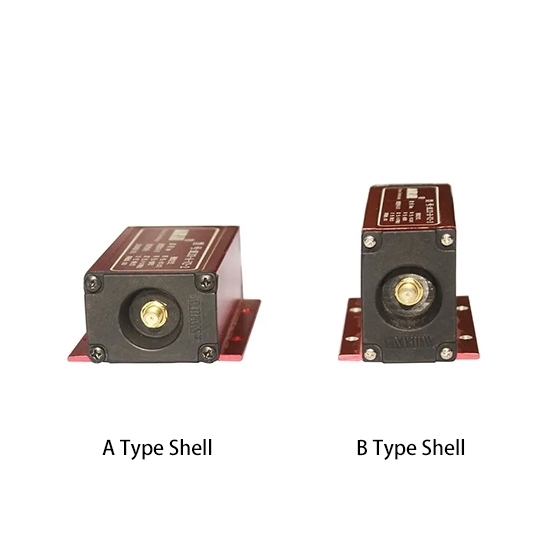
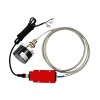
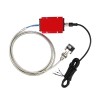
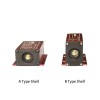
- Stock: In Stock
- Model: RDDLZ-ECDS-2550
- Weight: 1.00
- SKU: RDDLZ-ECDS-2550
Available Options
Buy good price eddy current sensor for your linear displacement measurement. Measuring range 25mm, probe diameter 50mm, optional output signal 0~5V/10V voltage, 4~20mA current or RS485, corresponding max working current 45/25/40mA. Eddy current displacement transducer also can be used in vibration measurement, non-contact, inductive type, stable operation.
Applications: By measuring the relative position of the measured metal object and the probe end, eddy current displacement sensor senses and processes it into corresponding electrical signal output. Eddy current displacement transducer adopts non-contact measurement, which can work reliably for a long time, has high sensitivity, strong anti-interference ability, fast response speed, and is not affected by media such as oil and water. Eddy current displacement sensors are widely used in long-term real-time monitoring of shaft displacement, shaft vibration, shaft speed and other specifications of large rotating machinery, and are extended to satellite launch, material identification, weighing measurement, metal plate thickness measurement, material deformation and other application fields.
Specification
| Model | RDDLZ-ML33-25 |
| Measurement Range | 25mm |
| Probe Diameter | 50mm |
| Linear Error | ≤ ±1 % F.S. |
| Resolution | 1.25 um |
| Repeatability | 2~4 um |
| Frequency Response (-3dB) | 0~1 kHz |
| Output Signal (optional) | Voltage 0-5V |
| Voltage 0-10V | |
| Current 4-20mA | |
| RS485 | |
| Power Supply (optional) | Voltage type: +9~18V DC, +18~36V DC, ± 15V~± 18V DC |
| Current type: +22~30V DC | |
| RS485 type: +12V DC | |
| Working Current | Voltage type: < 45mA |
| Current type: < 25mA | |
| RS485 type: < 40mA | |
| Ripple | ≤ 20mV |
| System Temperature Drift | ≤ 0.05% / ℃ |
| Static Sensitivity | Depending on output signal and the corresponding range |
| Output Load | Voltage output: Load capacity < 10 kΩ |
| Current output: Load capacity < 500 Ω | |
| Calibration Ambient Temperature | (20 ± 5) ℃ |
| Working Temperature | Probe -30℃ ~ +150℃, Proximitor -30℃ ~ +85℃ |
| Protection Grade | Probe IP67, Proximitor IP65 |
| Probe Thread | M8X1.0 |
| Probe Cable | Default 2m, customizable |
| Power Cable | Default 1m, customizable |
Eddy Current Action Principle Diagram (Unit: mm)
Eddy Current Displacement Sensor Probe Structure & Dimension Diagram (Unit: mm)
Note: The shell of the eddy current displacement sensor probe is used to connect and fix the probe head, and is used as a clamping structure when installing the probe. In order to adapt to different applications and mounting occasions, the probe shell has different types and different threads and size specifications.
Eddy Current Displacement Sensor Proximitor Shell Dimension Diagram (Unit: mm)
The proximitor is the signal processing center of the entire eddy current sensor system. On the one hand, the proximitor provides high-frequency AC excitation current for the probe coil to make the probe work. On the other hand, through a special circuit, the proximitor senses the change in the gap between the probe head and the metal conductor. After being processed by the proximitor, a voltage or current output signal that changes with the linear change of the gap is generated.
Details
Tips: Influence of the measured object surface on measurement result of eddy current displacement sensor.
Surface finish of the measured object facing the probe will affect the measurement result. If the surface of the measured object is not smooth, there will be a large additional error in the actual measurement application. Especially for vibration measurement, the error signal is superimposed with the actual vibration signal, and it is difficult to separate electrically. Therefore, the surface to be tested should be smooth and free of defects such as nicks, holes, bosses, grooves, etc. (except for bosses or grooves specially designed for key phasers and rotational speed measurement). When using eddy current displacement sensor for vibration measurement, the measured surface roughness should be between 0.4um and 0.8um. When using eddy current displacement sensor for displacement measurement, the measured surface roughness should be between 0.4um and 1.6um. If it cannot be satisfied, the surface to be measured needs to be ground or polished.
